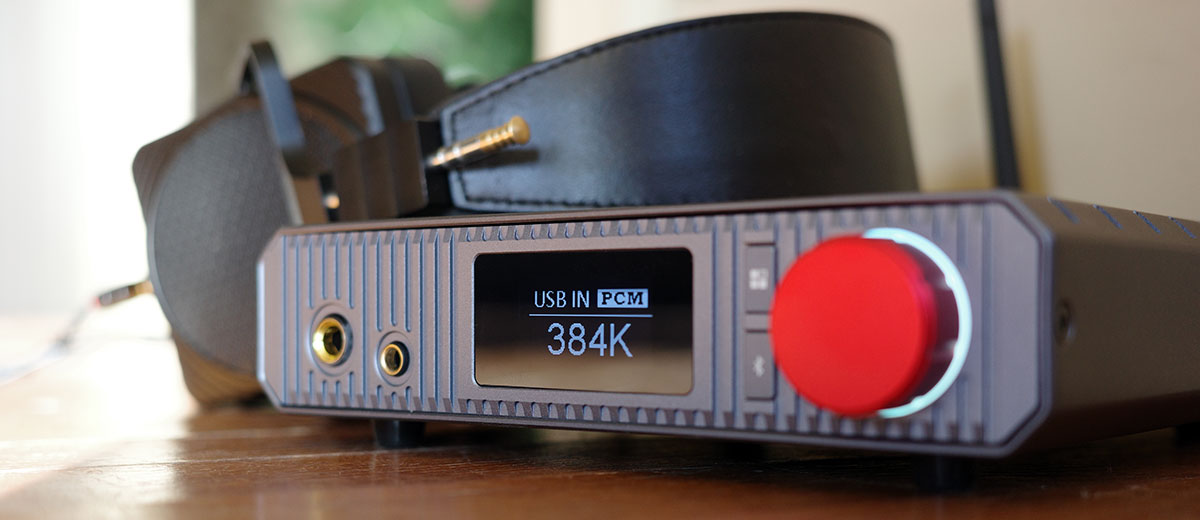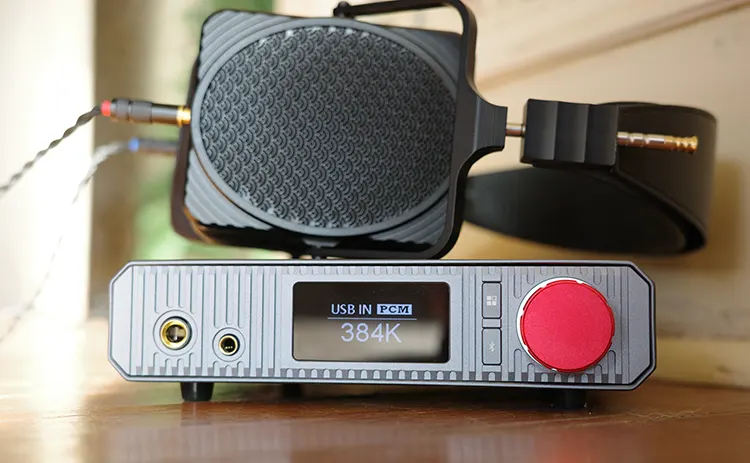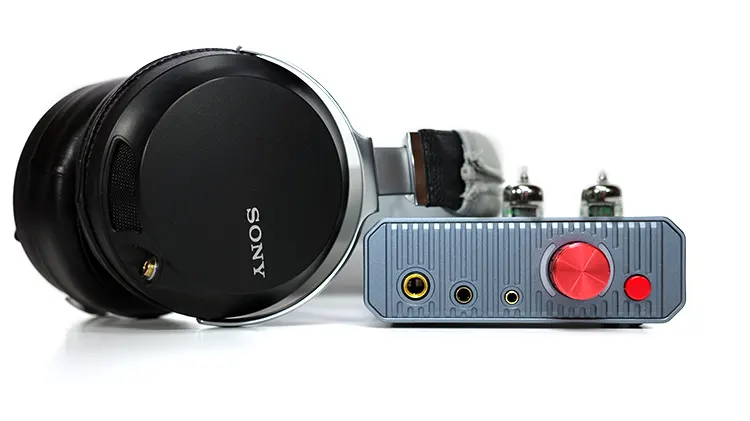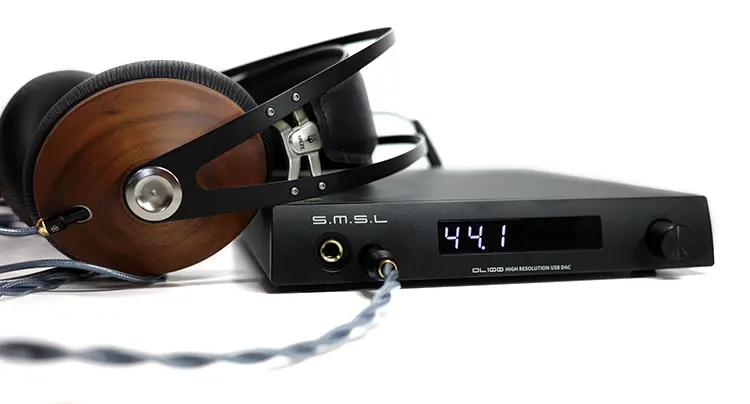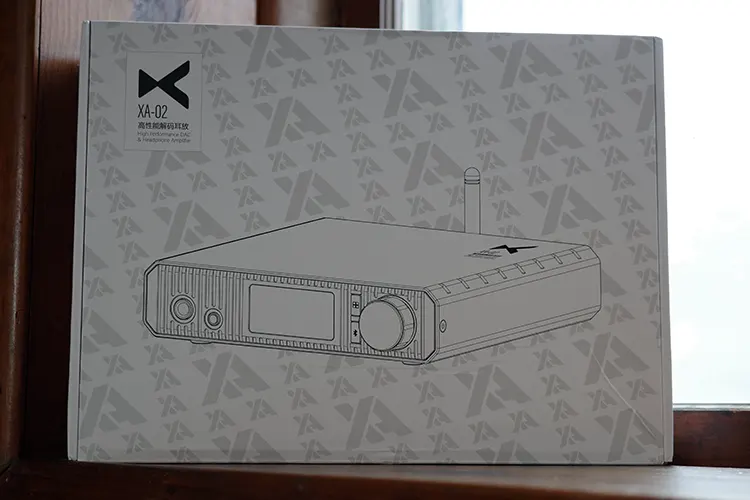Synergy
Having the ability to properly drive high-impedance headphones is the panacea of many amplifiers. Not so here.
The XA-02 can drive my hardest headphones, the SJY Horizon with a fairly easy draw. Running high gain, I could play the Horizons in pretty much any situation.
That ease of pairing worked across all listening devices utilized. I will add that IEMs don’t need to go past low gain and roughly ¼ to ⅓ volume levels to attain decently loud listening. I found that out the hard way, and fortunately I did not have the Solaris 2020 in my ears yet.
Changing the gain settings or bass on/off function allowed the use across many devices.
Efficiency
The XA-02 presented a black background no matter the listening device, or volume level. This is often the case with warmer, richer signature devices, but it is still nice to confirm this.
Even using the lower power output of the 6.35mm jack did not dissuade the XA-02 too much, although it would not have driven my 600Ω AKG DF240s to a loud level like the Horizons on the 4.4bal jack.
But, less-needy headphones can play along quite well, reaching very loud listening levels.
Power
As stated above, the XA-02 shines when using the 4.4mm balanced jack, or AUX out to the Edifier R1280DBs powered speakers. That 2000mW was more than capable of presenting music at intolerably high volume levels.
I do not doubt that it will work with most of the hardest-to-drive headphones out.
Using the included 3.5mm to 6.35mm jack adaptor, I could even listen with good effect to the Solaris 2020 using the regular cable. I sensed a very small amount of hiss, which was negligible unless you were looking out for it. The XA-02 drove the Solaris 2020 quite well as a result.
Pairings
My favorite pairing was the SJY Horizon paired with any source. Whether it be from BT and the FiiO TT13 or using a dedicated DAP such as the Shanling M6 Pro or FiiO JM21, the XA-02 drove the SJYs like they should be driven: with plenty of voltage carrying enough power to shine no matter the genre or source.
I tried the Campfire Audio Solaris 2020 for a bit but feel the XA-02 is a better fit with headphones due to the power produced.
Not that the Solaris were bad, but there isn’t much headroom to play with the volume, even on low gain. This is a similar experience to the xDuoo TA30, which is legendary in its ability to power.
Probably the listening setup I would use the most if I had the need, would be tethered to the TT13 via BT, connected to the Edifier R1280DBs speakers.
This provided me with plenty of listening pleasure, and quite adequate listening levels. Knowing this would make an excellent small-room setup, makes it all the more worthwhile.
Select Comparisons
xDuoo MH02
Technical
The xDuoo MH02 is a Class A buffered transistor headphone amplifier that uses 6J1 tubes as the pre-amplifier, warming what might be a colder, more sterile sound.
The single CS43131 DAC chip has a low noise floor that helps isolate any of the typical tube “ping” you might hear when touching the surfaces of the MH02.
The single ESS ES9039Q2M DAC in the XA-02 can decode PCM up to 32bit/384kHz and DSD256, identical to the MH02.
Providing up to 1300mW on a 32Ω load, the MH02 can drive most higher-impedance headphones quite well. The XA-02s 2000mW at 32Ω provides more power and it shows.
The gain switch can add either 12 dB or 18 dB for headphones which need a higher output to perform well.
Since the “normal” output is most likely 12dB, it should be considered a +6 dB gain between each setting. The XA-02 provides a more robust +9dB, which is again more noticeable, with an increase across the board.
With a line-out, the MH02 can also be used as a pre-amp for those who want to add another amplifier to the chain.
The AUX out on the XA-02 allows it to run directly into powered speakers, with good results. The XA-02 also has Coax and optical inputs, whereas the MH02 does not.
Design
The MH02 has a smaller, more rounded, rectangular footprint than the XA-02, with the two tubes sticking out of the top adding to the aura.
The sandblasted aluminum shell has “slots” to help dissipate heat as well as give the unit a more industrial look, especially with the gray coloring; which is very similar in design to the XA-02.
With dimensions of 12 x 7.8 x 4.0cm and a svelte weight of 0.35kg, the MH02 is imminently placeable within most systems or on its own in a constrained space.
The XA-02 is larger but has the same adaptability for space constraints (more so without the tubes sticking out).
Performance
The MH02 promotes a tube-like sound, with the warmth and smoothness you would expect, but the Class-A amplifier adds a level of unexpected detail.
The XA-02 exudes more detail and clarity, without losing too much in the smoothness qualities. Both promote top-quality sound, but the XA-02 comes across as more detailed, which is to be expected.
There is plenty of power to drive higher impedance headphones mostly with ease, and I rarely had to use the high gain setting.
The XA-02 raises that for even harder-to-drive headphones since it is more the more powerful amplifier. Where the MH02 can drive the SJY Horizon, the XA-02 thrives in driving the Horizon.
When using high gain, the midrange is elevated, and enhanced pushing it to the forefront, but without losing clarity on both ends too much. The separation is clear here since the XA-02 withdraws the mids slightly behind the overall signature.
The treble reach is smoothed by the tubes, with the bass digging a bit deeper, though without the familiar elongated, thumping notes typical of a tube amplifier.
The extended treble of the XA-02 is a bit more elevated, but still musical, extending the level of details up top in a more mature, but musical manner.
SMSL DL100
Technical
With 4 CS43131 chips, labeled as 2024’s first quad-chip, and TI’s OPA1612A Op-amps, the DL100’s DAC can offer a wide range of digital connections, including an HDMI (ARC) cable.
The XA-02s ESS ES9039Q2M DAC chip may seem lonely but does the job with extraordinary sound qualities.
The third generation XMOS XU-316 is capable of DSD Native 256, PCM up to 32bit/768kHz, and DoP64, whereas the XA-02 is capable of PCM up to 32-bit/384kHz, DSD64-256. Five PCM filters allow for some personalization, while the XA-02 provides 8.
That DL100’s amplifier can deliver up to 1.5W at 32Ω and 3.0W at 16Ω making it adequately powerful on its own.
The XA-02s 2000mW at 32Ω is more powerful, especially when using hard-to-drive headphones. I would suspect higher output voltage plays into this aspect.
Design
There is no getting around the diminutive size of the DL100, especially with how thin it is, height-wise. This can give the user many beneficial options for placing the unit within their system.
The XA-02 is slightly shorter than the DL100 (196 x 31 x 206mm), and approximately 50% taller. The XA-02 weighs less than the DL100, too (0.9kg vs 1.05kg).
The matte black finish on all sides also makes for an unassuming piece of gear, which means it can go about its business without drawing too much attention to itself.
The slightly canted sides remind me of the YULONG DA-ART Aquila series. I find this shape helps me grab hold of the DL100 when necessary.
The vent holes on each side of the XA-02 allow for good grip and aesthetically break up the gray rounded surface nicely. Two approaches and both work well.
Performance
I preferred the balanced output for listening on the DL100, where I was quite happy switching between options such as AUX out into powered speakers with the XA-02 and headphone use.
The balanced option helped to spread the soundstage out on the DL100, allowing the instruments to exercise in their own space. Conversely, the XA-02 carried the more cubic effect but allowed spatial representation to remain very accurate.
The DL100 promotes a neutral signature, displaying warmth and richness only if the source or music played does so. This comes across as one of the more neutral DAC/amps I have tried of late.
The XA-02’s slightly withdrawn mids could be considered a negative, but not to me within the confines of the overall musical effect. The slightly soft midrange allowed for the whole musical entree to come forth, instead of highlighting any particular aspect.
The lows of the DL100 offer aplomb when called upon, but without bloating the sound, or carrying over into the mids, which I appreciated. The top-end reach will add a bit of sparkle and a distinct clarity to the notes, without becoming grating or harsh.
The XA-02 can reach a bit lower thanks to the “Bass” switch on the submenu, and carries that extra oomph without bloating, across different listening options. The top-end does seem more restrained than the DL100, but not enough to dislike either.
My Verdict
The xDuoo XA-02 is a thoroughly enjoyable desktop DAC/Amplifier capable of powering my hardest-to-drive headphones as well as powered speakers with ease. I found that I enjoyed those multiple source/listening options more on the XA-02 than many of late.
Its ability to sound very good with excellent tonality across multiple listening options is a big positive, and it performs very well in that regard.
Where others may sound good to excellent across one platform or another, the XA-02 provided me with an enjoyable listening experience whether through my headphones or the Edifier R1280DBs powered speakers.
Where I would like to see an improvement is in menu options, giving the user more ability to personalize the unit. But, while listening you don’t need much, other than maybe a remote.
The accuracy of the red volume knob didn’t always function to my liking either, and a remote would have helped.
That said, the ability to run multiple source options or listening options, AND the power to do it override any minor quibbles I may have with the XA-02.
With very good levels of detail, and gobs of power like its older sibling the TA-30, the XA-02 is an excellent option for an all-in-one desktop DAC/Amp and I can recommend a good listening session for your enjoyment.
xDuoo XA-02 Technical Specifications
- Power Supply: AC 100-240V.
- Screen: 1.3-inch OLED screen.
- Compliant OS: Windows, Linux, Mac OS X, IOS, Android system
- USB Sampling Rate Support: PCM:16~32Bit/44.1~384kHz, DSD: DSD64~DSD256, MQA:1~384kHz
- COA/OPT Sampling Rate Support:PCM:PCM:16~24Bit/44.1~192kHz, DSD:DSD64(DOP)
- Bluetooth support formats: SBC, AAC, aptX, aptX LL, aptX HD, LDAC
- 35mm Headphone Output Parameters:
- Output Power:910mW(32Ω load)
- Frequency Response: 20Hz~60kHz(±0.5dB)
- Crosstalk:≥71dB
- SNR:119dB(A Weight)
- THD+N:002%.
- 4mm Bal Headphone Output Parameters:
- Output Power:2000mW(32Ω load)
- Frequency Response: 20Hz~60kHz(±0.5dB)
- Crosstalk:≥118dB
- SNR:121dB(A Weight)
- THD+N:0004%.
- AUX OUT Parameters:
- Output level:6Vrms
- Frequency Response:20Hz~60kHz(±0.5dB)
- Crosstalk:≥118dB
- SNR:121dB(A Weight)
- THD+N:≤0.0004%.
- Suitable headphone impedance:16Ω~600Ω.
- Size:200× 175× 47mm.
- Weight:9KG.

